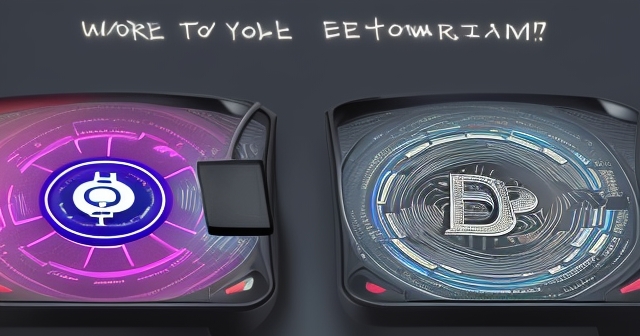Understanding Your Crypto Wallet Address: Your Digital Gateway to Sending and Receiving Assets
Welcome! If you’re stepping into the fascinating world of cryptocurrencies, or perhaps you’ve been here a while but want to deepen your technical understanding, you’ve likely encountered the term “wallet address.” What exactly is it? Think of it as your unique identifier on a specific blockchain network – the digital equivalent of a mailbox or, more accurately, a bank account number, but with some crucial differences. It’s the string of characters you provide to someone when you want to receive `cryptocurrency`, the digital destination for your `digital assets`. Understanding your `wallet address` is fundamental to securely participating in the `cryptocurrency` ecosystem.
In this comprehensive guide, we’ll break down what a `crypto wallet address` is, how it works, why it’s structured the way it is, and most importantly, how to use it safely. We aim to equip you with the knowledge to navigate `crypto transactions` with confidence, moving beyond just clicking buttons to truly grasping the underlying mechanics. Ready to demystify this essential component of `blockchain` technology?
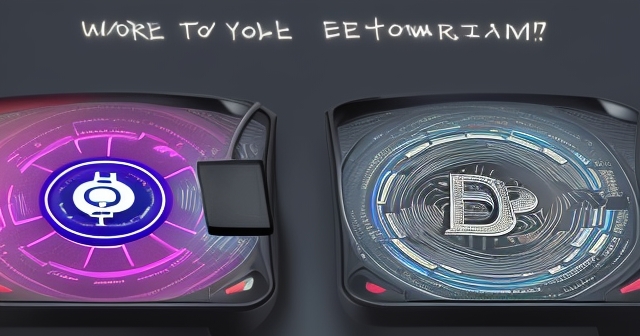
At its heart, a `wallet address` is a specific string of alphanumeric characters (and sometimes symbols) that serves as a unique destination point for `cryptocurrency` on a particular `blockchain`. When someone wants to send you `Bitcoin (BTC)`, `Ethereum (ETH)`, or any other crypto asset, they need your specific `wallet address` for that specific `cryptocurrency` on its native `blockchain`. It’s like telling someone your email address so they can send you an email – without the correct address, the message (or in this case, the funds) can’t reach you.
Unlike a traditional bank account number which is linked to a physical institution and your identity, a `crypto wallet address` is primarily linked to a cryptographic key pair on the `blockchain`. It doesn’t inherently contain your personal identity, offering a layer of pseudo-anonymity, though we’ll discuss the nuances of privacy later. Its primary, almost singular, function is to act as a public receiving address for `digital assets` on a specific network. We use our `wallet addresses` every time we want to receive funds from an exchange like `Coinbase`, from another individual, or from a decentralized application (`dApp`). It’s the public face of where your funds *can* land on the distributed ledger that is the `blockchain`.
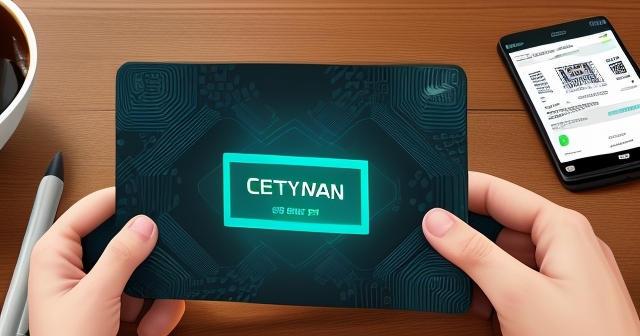
To truly grasp what a `wallet address` is, we need to understand the cryptographic foundation upon which `cryptocurrency` operates: the public-key cryptography system. Every `crypto wallet`, whether it’s a `hardware wallet` like a `Ledger` or `Trezor`, or a software wallet like `MetaMask` or `Coinbase Wallet`, manages a pair of mathematically linked keys for each `cryptocurrency` it supports: a `public key` and a `private key`.
The `public key` is derived from the `private key` using complex mathematical functions. Think of the `private key` as the master key. The `public key` is then used to generate your `wallet address`. This generation process typically involves a `hashing function` and sometimes further encoding. This makes the `wallet address` shorter and provides error detection capabilities.
Why this two-key system? The `public key` (and thus the `wallet address` derived from it) is designed to be shared freely. People need it to send you funds. The `private key`, however, must be kept absolutely secret. It is the cryptographic proof of ownership for the funds associated with your `public key` and `wallet address`. When you want to send a `transaction`, you use your `private key` to cryptographically “sign” it. This signature proves that you authorize the movement of funds without revealing your `private key` itself.
| Key Type | Description |
|---|---|
| Public Key | Can be shared freely; used for receiving funds. |
| Private Key | Must be kept secret; used for signing transactions. |
This entire process – the generation of keys, the derivation of the address, and the signing of transactions – is recorded and verified by the decentralized network of computers running the `blockchain`. The `blockchain` acts as a transparent, immutable ledger tracking every `transaction` to and from each `wallet address`. So, while your address is public, the control over the funds sent to it rests solely with the holder of the corresponding `private key`.
Let’s pause here because the distinction between `public key` and `private key` is not just technical jargon; it is the absolute foundation of `crypto security` and your sole responsibility, especially with `non-custodial wallets`. We’ve established that your `wallet address` is derived from your `public key` and is shareable. But the `private key`? That’s your ultimate secret.
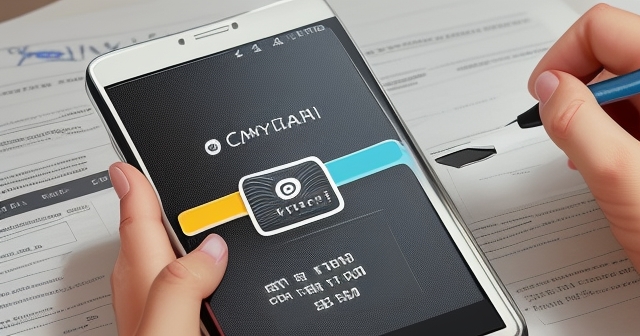
Imagine your `public key` as a complex lockbox installed in a public square. The `wallet address` is the specific street address and number of that lockbox. Anyone can see it and put something *into* it. Now, your `private key` is the unique key that can *open* that specific lockbox. Only with the `private key` can you access and move the contents (`crypto funds`) within. If someone else gets your `private key`, they gain complete control over all funds associated with that address, just as if they had the key to your physical safe.
This is why the common mantra in crypto is “Not your keys, not your crypto.” If you use a `custodial wallet`, like holding crypto on an exchange platform such as `Coinbase`, they technically hold the `private keys` for you. They manage the addresses, and you trust them to secure your funds and process your transactions on your behalf. While convenient, this introduces counterparty risk – you are relying on the exchange’s security and policies.
With a `non-custodial wallet` (like `MetaMask` or `Ledger`), you are the sole guardian of your `private keys` (often represented by a seed phrase). This grants you full control and eliminates counterparty risk, but it places the entire burden of security squarely on your shoulders. Lose your `private key` or seed phrase, and you lose access to your funds, potentially forever. It’s a significant responsibility, wouldn’t you agree?
More Than Just One Type: Understanding Different Address Formats
Here’s where things can get a bit complex and where a common mistake leading to `fund loss` occurs. While the concept of a `wallet address` is universal across `blockchain` networks, the specific *format* of the address varies significantly from one `cryptocurrency` to another. You cannot send `Bitcoin` to an `Ethereum` address, nor can you send `Litecoin (LTC)` to a `Bitcoin Cash (BCH)` address, even if the formats look superficially similar. Trying to do so will almost certainly result in the permanent and irreversible loss of your funds.
Why the variation? Different `blockchains` were built with different technologies, algorithms, and purposes. Their address formats are a reflection of their underlying architecture, cryptographic functions, and even updates made over time to improve efficiency or add features. Understanding these differences is crucial for seamless `crypto transfer`.
For instance, `Bitcoin` has evolved several address formats, while `Ethereum` has a distinct one. `Stellar (XLM)` even uses a unique system called the `Federation Protocol` that allows for human-readable addresses linked to cryptographic ones. We must always pay close attention to the specific `address format` required for the `cryptocurrency` we are sending or receiving.
| Cryptocurrency | Address Format |
|---|---|
| Bitcoin (BTC) | Starts with ‘1’, ‘3’, ‘bc1’, or ‘bc1p’ |
| Ethereum (ETH) | Starts with ‘0x’ |
| Litecoin (LTC) | Starts with ‘L’, ‘M’, or ‘ltc1’ |
This diversity underscores the critical need for vigilance. Always confirm the exact `address format` your wallet provides for the specific asset you expect to receive, and ensure the sender is using a compatible format for that asset on its correct `blockchain`.
Diving Deeper: Specific Examples of Wallet Address Formats
Let’s look at some of the most common address formats you’ll encounter:
-
Bitcoin (BTC) Addresses: `Bitcoin` has introduced several address types over the years:
-
Legacy Addresses (P2PKH): These start with the number ‘1’. Example:
1BvBMSEYstWetqTFn5Au4m4GFg7xJaNVN2. These are the original `Bitcoin` addresses. -
SegWit Compatibility Addresses (P2SH): These start with the number ‘3’. Example:
3J98t1WpEZ73CNmQviecrnyiWrnqRhWNLy. These were introduced to allow older wallets to send to newer SegWit addresses, offering some of the benefits of SegWit. -
Native SegWit Addresses (Bech32): These start with ‘bc1’. Example:
bc1qar0srrr7xfkvy5l643lydnw9re59gtzzwf5mdq. These addresses are typically shorter, case-insensitive, and offer better error detection. Transactions sent using native SegWit addresses often have lower fees. -
Taproot Addresses (Bech32m): These also start with ‘bc1p’. Example:
bc1p5d7rjqvznjht2x7rilmok6c9l9m95m9l6n4m7t2znc9p2jxjcp0q8ysv2f. The newest format, introduced with the Taproot upgrade, offering enhanced privacy, flexibility, and efficiency for complex transactions.
While most modern wallets and exchanges support sending to all these `Bitcoin address` types, you need to provide the sender with the specific type your wallet is generating for receiving.
-
-
Ethereum (ETH) Addresses: `Ethereum` and most tokens built on the `Ethereum` `blockchain` (ERC-20 tokens, NFTs, etc.) use addresses that start with ‘0x’. Example:
0x5aAeb6053F3E94C9b9A09f33669435E7Ef1BeAed. These addresses are 42 characters long and are derived from the last 20 bytes of the `public key`’s hash. The ‘0x’ prefix is a standard hexadecimal identifier. -
Other Cryptocurrencies: Many other chains have their own unique formats. `Litecoin (LTC)` addresses often start with ‘L’ or ‘M’, or ‘ltc1’ (for its own SegWit implementation). `Dogecoin (DOGE)` addresses typically start with ‘D’. Always verify the correct format for the specific `cryptocurrency` you are dealing with.
This diversity underscores the critical need for vigilance. Always confirm the exact `address format` your wallet provides for the specific asset you expect to receive, and ensure the sender is using a compatible format for that asset on its correct `blockchain`.
Getting and Managing Your Wallet Address
So, how do you get your hands on one of these addresses? Fortunately, you don’t need to manually derive it from your `public key`. When you create a `crypto wallet`, whether it’s a software wallet installed on your phone or computer (`hot wallet`), or a physical `hardware wallet` (`cold wallet`), the wallet software automatically generates the necessary key pairs and derived `wallet addresses` for the `cryptocurrencies` it supports.
Finding your address is usually straightforward within the wallet interface. Look for options like “Receive,” “Fund Wallet,” “Deposit,” or simply the name of the `cryptocurrency` you are interested in. Tapping or clicking on the relevant asset (like `Bitcoin` or `Ethereum`) will typically display your primary `wallet address` for that chain. Most wallets also provide a `QR code` version of your address, which is incredibly convenient for mobile-to-mobile scanning during in-person transactions or when copying from one device to another.
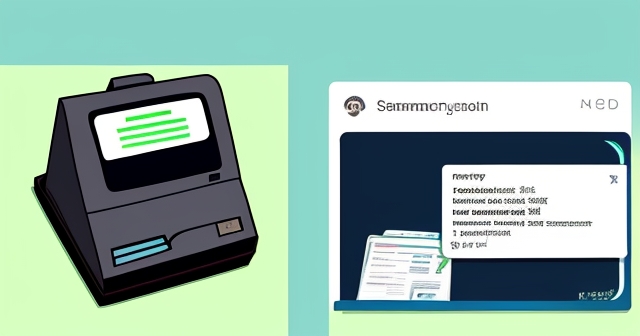
Some wallets, particularly those handling `Bitcoin` (due to its UTXO model), might generate a new receiving address for each transaction. This isn’t because the old one is invalid, but as a privacy enhancement technique. The funds sent to older addresses associated with your wallet are still controlled by your `private keys`. Other wallets, like those for `Ethereum`, tend to use one persistent primary address.
| Wallet Type | Key Management |
|---|---|
| Custodial Wallet | The service holds the private keys. |
| Non-Custodial Wallet | You hold your own private keys. |
Could you create a custom, easy-to-remember address? Manually generating an address with specific leading characters (vanity addresses) is computationally intensive and generally not recommended due to the risk involved. However, services like `Unstoppable Domains` offer a different approach, allowing you to link human-readable names (like “yourname.crypto” or “yourbusiness.eth”) to your complex `wallet addresses` across various `blockchains`. This simplifies sending and receiving, as you can tell someone “send it to yourname.crypto” instead of a long alphanumeric string. This is a developing area aimed at improving usability.
Different Homes for Your Addresses: Custodial vs. Non-Custodial Wallets
The type of wallet you choose fundamentally impacts your relationship with your `wallet address` and, more importantly, the associated `private keys`. Let’s reiterate this critical distinction:
-
Custodial Wallets: When you hold crypto on platforms like `Coinbase`, `BitPay` (in some configurations), or other exchanges, you are using a `custodial wallet`. The exchange creates and manages the `private keys` associated with the `wallet address` they provide you. While you see an address to deposit funds, you don’t have direct control over the underlying keys. You trust the custodian to keep them secure and to process withdrawals when you request them. This is convenient, especially for beginners or active traders, but it means you don’t have sovereign control over your `digital assets`. If the platform is hacked, goes bankrupt, or freezes your account, your access to funds linked to that `wallet address` could be compromised.
-
Non-Custodial Wallets: With `non-custodial wallets` (such as `MetaMask`, `Trust Wallet`, `Ledger`, `Trezor`), *you* are given direct access to your `private keys` (or the seed phrase that generates them). The wallet software/hardware helps you manage these keys and interact with the `blockchain`, displaying your `wallet addresses` for receiving. In this model, you have full control and responsibility. No third party can freeze or access your funds as long as your `private keys` remain secret and secure. This is the preferred method for many who value sovereignty and decentralization, but it requires diligent self-custody practices.
Regardless of whether you use a `custodial` or `non-custodial wallet`, you will interact with a `wallet address` to receive funds. The difference lies in who holds the ultimate power (the `private key`) to spend the funds once they arrive at that address.
Essential Security Tips for Using Wallet Addresses
Given the irreversibility of `crypto transactions`, security is paramount when dealing with `wallet addresses`. Mistakes can be costly, often resulting in `fund loss` that is impossible to recover. Here are essential tips:
1. Double-Check, Triple-Check the Address: This cannot be stressed enough. Before confirming *any* `crypto transfer`, meticulously verify the recipient’s `wallet address`. Compare it character by character, especially the beginning and end. Copy-pasting is convenient, but clipboard malware can alter addresses. Consider typing a few characters and then verifying the rest.
2. Use QR Codes: For receiving, having the sender scan your `QR code` is much safer than having them manually type or even copy-paste a long string, as it significantly reduces the risk of transcription errors or malicious substitution.
3. Send a Small Test Transaction (For large amounts): If you are sending a significant amount of `crypto funds` to a new address you haven’t used before, or to a wallet you just set up, consider sending a very small amount first. Once that small `transaction` is confirmed on the `blockchain` and appears in the recipient’s wallet, you can be confident the address is correct and proceed with the larger transfer. While this incurs a small extra fee, it’s negligible compared to the risk of losing a large sum.
4. Be Aware of Address Poisoning Scams: This is a more sophisticated threat. Attackers send a tiny amount of crypto (often dust) to your wallet using an address that deliberately mimics one you recently interacted with, perhaps changing just one or two characters at the end or beginning. Their hope is that the next time you want to send funds to your legitimate contact, you’ll glance at your transaction history, see their similar-looking address, and mistakenly copy the *fake* one instead of the real one. Always copy addresses from a trusted source (like an address book or direct from the recipient) rather than your recent transaction history, and verify more than just the first few and last few characters.
5. NEVER Share Your Private Key or Seed Phrase: This is the golden rule. Your `wallet address` is public, your `private key` is sacred. No legitimate request for payment, no wallet support, no platform will ever ask for your `private key` or seed phrase. Anyone asking is trying to steal your funds. Guard this like the keys to your kingdom.
6. Use Reputable Wallets and Platforms: Stick to well-known and audited `crypto wallet` applications and exchanges (`Coinbase`, `MetaMask`, `Ledger`, `Trezor`, etc.). Phishing scams and fake wallet apps are prevalent and designed to steal your `private keys` or trick you into sending funds to attacker-controlled addresses.
By adopting these practices, you dramatically reduce the risk of `fund loss` and ensure your `crypto transfers` reach their intended destination.
Privacy Implications: Pseudo-Anonymity and Blockchain Trackability
A common misconception about `cryptocurrency` is that it’s entirely anonymous. While a `wallet address` doesn’t typically reveal your real-world identity directly, it’s more accurate to describe `blockchain` transactions and `wallet addresses` as `pseudo-anonymous`. Why?
Because every `transaction` to or from a `wallet address` is permanently recorded on the public `blockchain` ledger. Anyone in the world can use a `blockchain explorer` (like `Etherscan` for `Ethereum` or various sites for `Bitcoin`) to look up a specific `wallet address` and see every `transaction` it has ever sent or received, including the amounts, timestamps, and counterparty addresses. This level of transparency is unprecedented in traditional finance.
While the address itself is just a string of characters, if that address can be linked to a real-world identity (for example, if you used that address to receive funds from a KYC-verified exchange like `Coinbase` that holds your ID, or if you publicly share your address online), then all past and future transactions associated with that address can potentially be traced back to you. Law enforcement, tax authorities, and data analytics firms routinely use `blockchain explorers` and sophisticated tracing techniques to follow the flow of funds between addresses.
Some `blockchains` and wallets employ techniques to enhance privacy, such as generating a new address for each incoming `transaction` (as seen in some `Bitcoin` wallets using the UTXO model). While this makes tracing *all* of your activity harder by fragmenting it across multiple addresses, it doesn’t make it impossible, as advanced analytics can still cluster addresses likely belonging to the same entity based on transaction patterns. Fully anonymous cryptocurrencies exist, but they use different technologies (like zk-SNARKs or CoinJoin) that go beyond the scope of a standard `wallet address` explanation.
For investors, the public nature of transactions also has implications for things like tax reporting. Tools like `CoinLedger` connect to your wallets and exchanges using your public addresses/keys (not private keys) to track transactions and calculate tax obligations based on the publicly available `blockchain` data and exchange records.
Beyond Basic Addresses: Towards User-Friendly Identifiers
While the complex strings of a `wallet address` are functional for computers and the `blockchain`, they are far from user-friendly for humans. Imagine having to dictate or memorize a 34-character string just to get paid! The industry is actively working on solutions to make sending and receiving `cryptocurrency` as easy as sending an email or text message.
We briefly touched on `Unstoppable Domains`. These decentralized domain names (ending in extensions like .crypto, .nft, .x, .eth) function similarly to website domain names but are stored on `blockchains`. You buy a domain name, and then you link it to your various `wallet addresses` (Bitcoin, Ethereum, Litecoin, etc.) within your domain management dashboard. When someone wants to send you crypto, they simply enter your easy-to-remember domain name (e.g., “johnsmith.crypto”) into a compatible wallet or exchange, and the system automatically looks up and routes the funds to the correct underlying `wallet address` for that specific `cryptocurrency`. This abstraction layer makes the complexity of different addresses and chains less visible to the end-user.
Another example is the `Stellar Federation Protocol` used by `Stellar (XLM)`. This allows users to send payments to simple identifiers (like an email address format: `username*stellarterra.com`) instead of a long `XLM` address. A decentralized network of servers resolves this human-readable identifier to the underlying Stellar `wallet address` and memo ID needed for the transaction.
These innovations represent the next step in making `cryptocurrency` more accessible and less prone to errors caused by handling complex `address format` strings. While the underlying `wallet address` remains crucial on the `blockchain`, the user experience is evolving towards simpler identifiers.
Conclusion: Navigating the Digital Currents with Confidence
Understanding your `crypto wallet address` is more than just knowing where to find it; it’s about comprehending its role as your unique digital identifier on the `blockchain`, its derivation from your `public key`, and its crucial distinction from your highly sensitive `private key`. It’s the destination for your `digital assets`, publicly visible on the immutable ledger of the `blockchain`, yet controlled only by the corresponding `private key`.
We’ve seen how different `cryptocurrencies` have distinct `wallet address` formats and the absolute necessity of using the correct one to avoid irreversible `fund loss`. We’ve also discussed the vital importance of `crypto security`, emphasizing the need to double-check addresses, use `QR codes`, and remain ever vigilant against scams like `address poisoning`. Perhaps most importantly, we reinforced that safeguarding your `private key` or seed phrase is your ultimate responsibility, especially with `non-custodial wallets`, as it is the sole key to accessing your `crypto funds`.
As you continue your journey in the world of `cryptocurrency`, whether you are a beginner making your first `transaction` or a seasoned trader exploring technical analysis, a solid grasp of these foundational concepts is essential. By treating your `wallet address` with the careful attention it deserves and understanding the security implications of handling `private keys`, you empower yourself to interact with the `blockchain` confidently and securely. Keep learning, stay vigilant, and navigate the digital currents wisely.
wallet address meaningFAQ
Q:What is a crypto wallet address?
A:A crypto wallet address is a unique identifier on a blockchain that acts as a destination for receiving cryptocurrencies.
Q:How do I find my wallet address?
A:You can find your wallet address in the wallet interface, typically under options like “Receive” or “Deposit.”
Q:What is the difference between a public key and a private key?
A:The public key is a shareable address for receiving funds, while the private key must be kept secret and is used to sign transactions.
